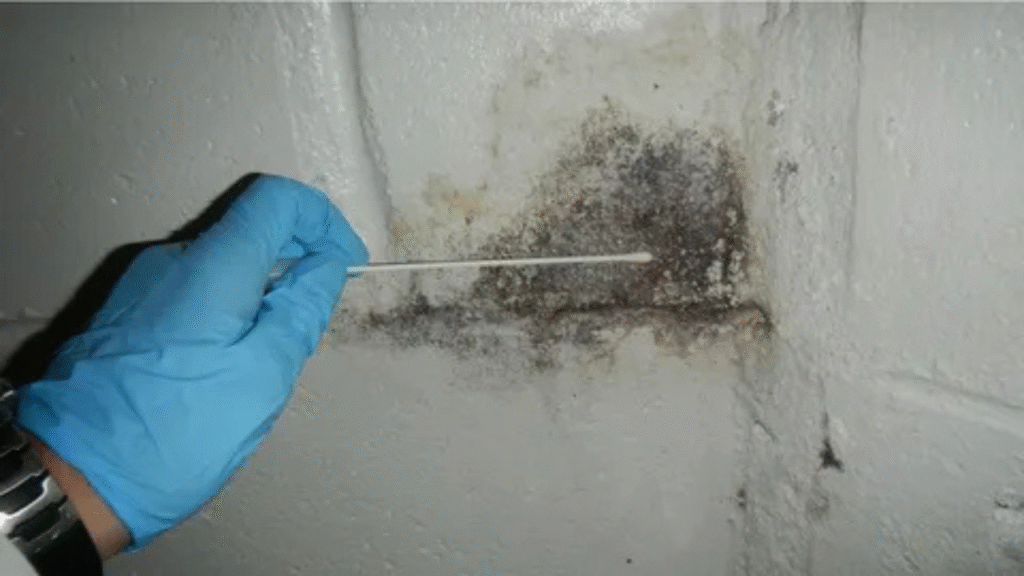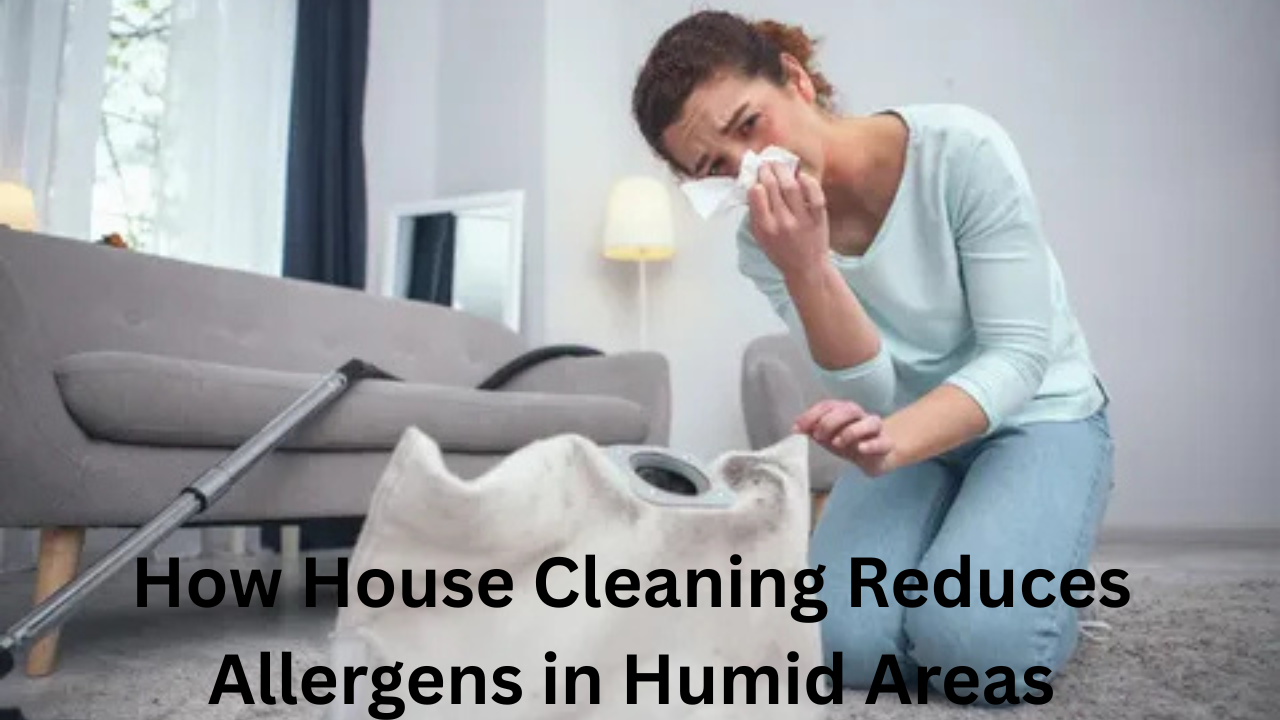Humidity is not only making your house sticky and uncomfortable but also a latent hotspot of allergens that will cause havoc to your well-being. Think of the time you wake up with sneezing, itchy eyes or coughing all day long, and all because the nearby air is harboring invisible things that have proliferated in the damp corners of your house. You know how hard this is if you are living in a humid climate. And this is the fun part, though, by employing the appropriate house cleaning techniques, you will be able to reduce the number of allergens and turn your home into a safe and breathable environment. It may be getting rid of dust bunnies, mold invaders, or mildew fighters, but good cleaning is your secret weapon.
Are you ready to know how house cleaning helps to eliminate allergens in humid environments and ultimately be in control of the quality of your indoor air? Today, get ready to open the door and enjoy the allergen-free home you have always wanted!
Why Allergens Increase in Humid Areas
How Humidity Promotes Dust Mites, Mold, and Mildew
The moisture level is important in the growth and the survival of the common domestic allergens such as dust mites, mould and mildew. Microscopic creatures, the dust mites cause allergic reactions to those with the humidity constantly exceeding 50 percent because they need moisture to survive. Excess moisture provides a perfect breeding ground for these allergens to multiply at a fast rate and exacerbate the quality of indoor air. These sources of allergens are chronic in humid homes and therefore, it is necessary to control the amount of moisture in the house.
Common Household Triggers That Thrive in Moisture
- Furnishings such as carpets, curtains and bedding are considered soft furnishings.
- Baseboards and furniture made of wood.
- Tiles and grout in the bathroom and the shower.
- Vents and air conditioners in HVAC.
Signs Your Home Has High Allergen Buildup
- Continuous stale-smeary smells.
- Observable spots of mold on the walls or ceilings.
- More symptoms of allergy, which include sneezing, a runny nose, and itchy eyes in the indoor environment.
- Soon, dust was settling upon surfaces despite cleaning.
Allergy-Friendly Cleaning Methods for Humid Homes
How to Clean Without Triggering Sensitivities
When cleaning in humid environments, it’s important to choose products and methods that won’t worsen allergy symptoms. Use fragrance-free and hypoallergenic cleaning products, as these are less likely to irritate the respiratory system. Avoid harsh chemicals that can cause coughing, sneezing, or breathing difficulties. Maintain a regular cleaning schedule to prevent allergens from building up and triggering reactions.
Tools and Products That Make a Difference
The appropriate tools will help you much to enhance the outcomes of your cleaning process, not to mention your health. Microfiber cloths are very useful as they do not simply spread dust and allergens into the air, they capture them. HEPA-filter vacuum cleaners help to remove small particles, such as dust mites and mold spores, and are therefore important in controlling allergens. To prevent moulds, some natural cleaners like vinegar and baking soda are safe and free of chemicals, which are well for damp environment.
Dust Mite Prevention Tips
How to Keep Fabrics, Carpets, and Bedding Allergen-Free
Dust mites are not an exception as well since they are also common in fabrics, carpets and bedding and as such, they can be considered as being a critical point of concern as far as reducing the effects of allergies is concerned. To eliminate dust mites, one must wash at least once a week in hot water at least 130°F. Another barrier that will help in excluding the mites from your sleeping surfaces is allergen-proof pillow and mattress covers. The house must also be maintained as clean as possible and clutter can provide dust with areas in which it can conceal itself and a variety of areas where dust mites can be discovered.
Regular Cleaning Routines to Limit Mite Growth
To prevent dust mites, it is important to have the carpets and upholstered furniture in the house vacuumed at least three times a week, preferably with a vacuum having a HEPA filter that would effectively trap allergens. To dust, one should always use a damp cloth so as not to stir up dust in the air. Always dry damp places in your home immediately so that the amount of moisture will not accumulate and this will encourage the growth of dust mites. Regular cleaning of those areas will reduce the number of dust mites by a great extent and enhance the quality of the indoor air.

Mold and Mildew Control Techniques
Where Mold Hides and How to Remove It Safely
Mold is usually found in dark and damp corners behind the furniture, under the sink, and inside the closets, where one cannot tell that it is damp. In an attempt to eliminate the mold, soak the area covered with the mold with white vinegar or commercial mold removers. In the removal of the moulds, the consideration that should be kept in mind is to ensure that you are safe by wearing gloves and masks to avoid inhaling the spores and even direct exposure to the moulds.
Natural and Chemical Options for Mold Prevention
To avoid the growth of molds, it is good to begin with the humidity of the interior moisture levels. It is very effective to keep the moisture less than 50% with the help of a dehumidifier. Proper ventilation is another measure that would prevent the accumulation of moisture. Painting problem areas like bathrooms or basements with mold-resistant paint will provide an additional barrier to the development of mold.
How Ventilation and Cleaning Go Hand in Hand
Measures of mould prevention and clean indoor air can be taken through good ventilation measures. It should be a habit to open windows when one can so that there is airflow in the house, and fans in the bathroom and kitchen to remove moisture at its source. It can be done through regular cleaning of air vents and filters to ensure that your ventilation system is efficient and it is not a potential origin of accumulation of allergens.
Why HEPA Filters Matter for Allergy Relief
HEPA-filter vacuums are essential for allergy sufferers because they trap up to 99.97% of particles as small as 0.3 microns, including dust mites, pet dander, and mold spores. Unlike standard vacuums, HEPA models prevent these allergens from being released back into the air during cleaning, significantly improving indoor air quality and reducing allergy symptoms.
Surfaces That Benefit Most from HEPA Vacuuming
Cleaning with the use of HEPA vacuuming is most effective in places where the allergy factor is likely to occur, and this includes carpets and rugs where dust mites may live. The allergens also stay inside the upholstered furniture, which is also an important reason why it is important to vacuum it often. The curtains and the drapes accumulate dust and other environmental particles and this type of vacuuming is best done with HEPA so that the airborne irritants may not be excessive.
Maintenance Tips for Your Vacuum Cleaner
To make sure that your HEPA vacuum is functioning properly, you need to empty dust containers outside so that you do not kick dust back into the house. Filter House filters should be replaced or cleaned frequently based on the instructions provided by the manufacturer, in order to ensure optimum filtration. Check the brush roll is used to remove tangled hair and debris that may decrease suction power and cleanliness. Proper vacuum care maximizes the benefits of the removal of allergens and also extends the duration of your vacuum.
How Clean Dehumidifiers Improve Indoor Air Quality
A functioning dehumidifier will remove moisture effectively within the house, making it an unfavorable environment for mold and dust mites. This moisture control not only helps in avoiding the growth of allergens, but also enhances the general comfort level of the air, as one can comfortably breathe it, particularly persons with allergies and asthma.
Humid Climate Air Purification Tips
How to Pair Cleaning with Air Purifiers
Regular cleaning with the appropriate air purifier has an optimal effect on how often it is used in damp climates to manage the allergens. Select air purifiers that have both the HEPA and the activated carbon filters. The HEPA filters can effectively trap the particulate allergens such as dust, pollen, and pet dander whereas activated carbon filters get rid of the odors and chemical vapours that are usually found indoors. There is a combination of these, which helps keep the air cleaner and lessens irritants that cause allergies.
Choosing the Right Filters for Allergy Sufferers
To eliminate the fine particles that result in allergic reactions, HEPA filters play an essential role since they capture the small particles up to 99.97% as small as 0.3 microns. Activated carbon filters are used together with HEPA filters, in which gases, odors and volatile organic compounds (VOCs) also contribute to worsening respiratory problems. The combination of the two types of filters in purifiers provides complete air cleaning and is used to relieve allergies.
Where to Place Purifiers for Maximum Coverage
To maximize the effect, install air purifiers in rooms that you spend most of your time in, because the ability to control the presence of allergens in the bedrooms and the living rooms is what influences your health the most. Also, place purifiers around the places that are recognized to contain allergens, like pets or dusty areas, to trap the irritants there. Making sure that your entire house is covered is a supplement to cleaning and makes the indoor air quality better.
Conclusion
Proper cleaning of the house is the key to the elimination of allergens in humid environments. Prevent dust mites, contain molds, HEPA vacuum, all of these measures are important in making the living environment healthier and more comfortable. Through due diligence and the appropriate equipment, you can restore your house to sanity by eliminating allergens and enjoying cleaner air to breathe day in and day out.
Need professional assistance in keeping your home allergen-free? All city cleaning is there to assist you with professional allergy-friendly cleaning services suitably customized to meet the needs of a humid climate. Call us and get to know more.
FAQ’s
It’s best to wash bedding weekly in hot water (at least 130°F) to effectively kill dust mites and reduce allergen buildup.
Keep indoor humidity below 50% using a dehumidifier, ensure good ventilation, use mold-resistant paint, and clean mold promptly with natural or commercial products.
Deep cleaning of the house should be done every 3 to 6 months in humid conditions, although in case of severe allergies, cleaning should be done more frequently.
Yes, natural cleaners such as vinegar and baking soda can prevent mold, and they do not have as high a chance of irritating as harsh chemicals.






